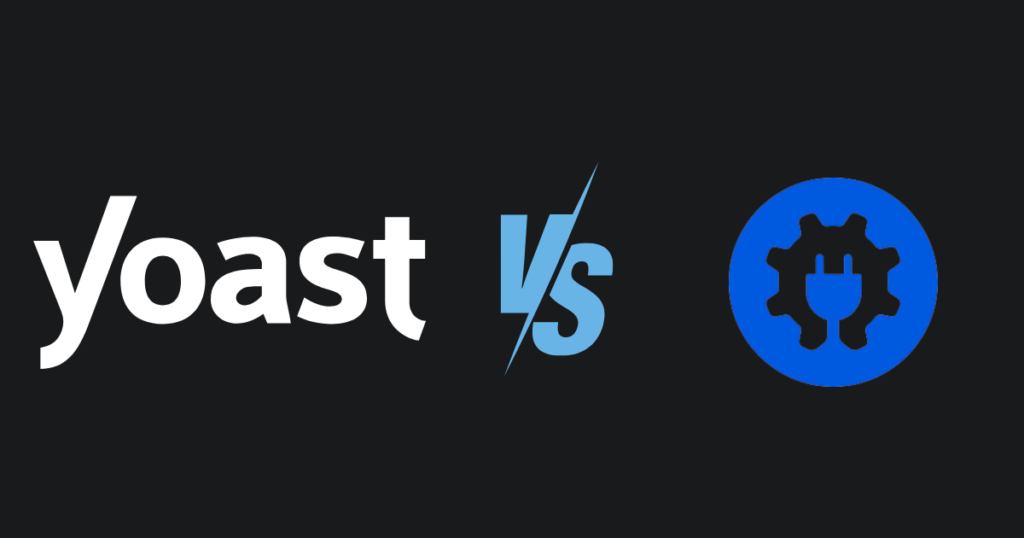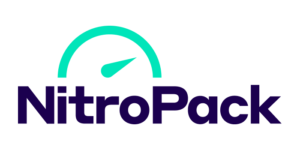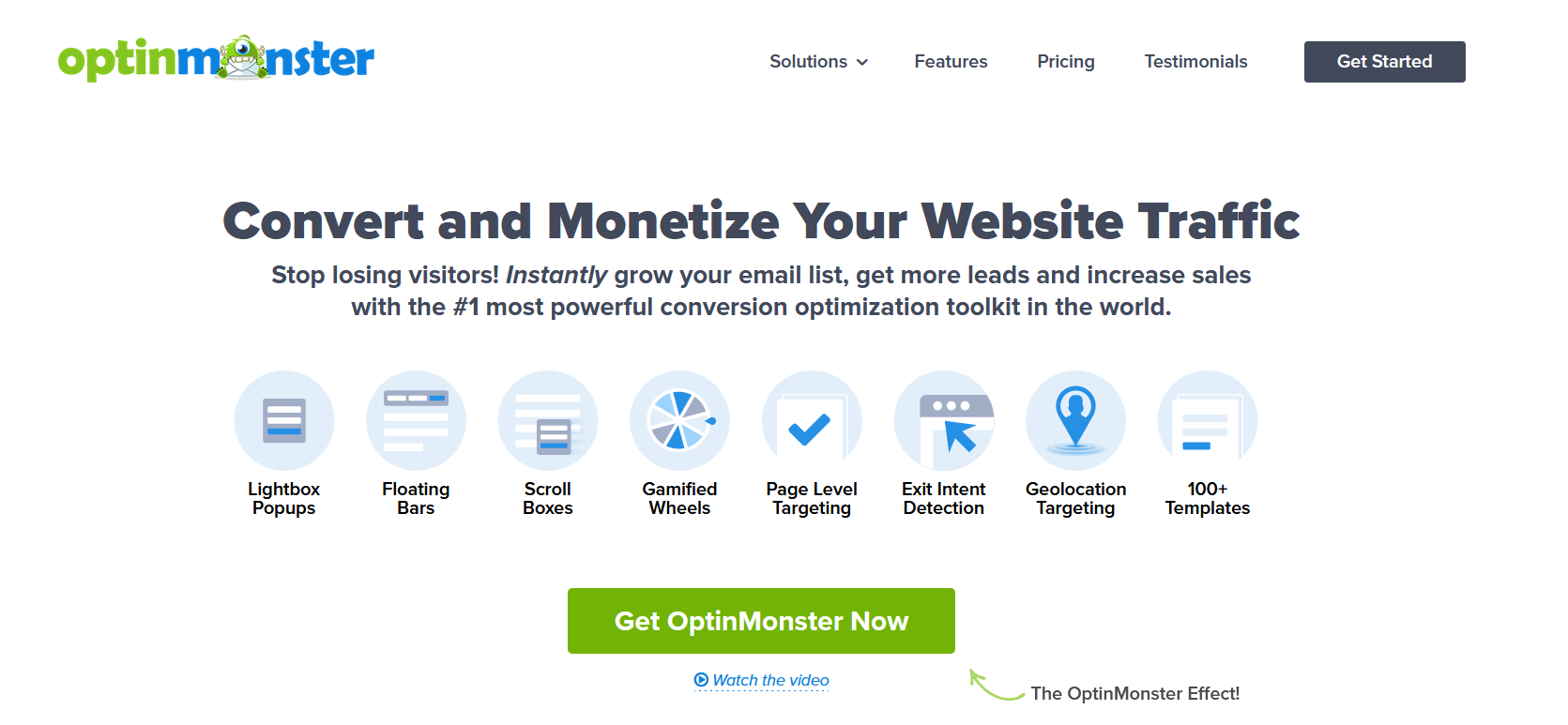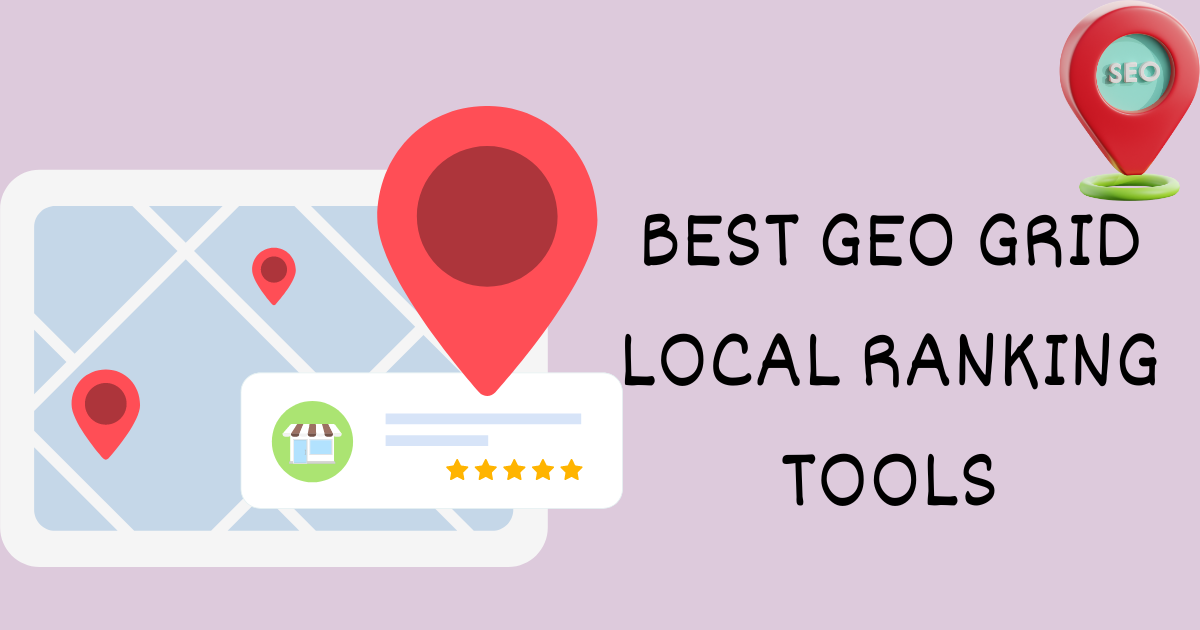It’s no news that site optimization plays a vital role in site SEO success. Optimizing your WordPress site successfully for SEO can help you become visible at the top of Google search results. No one wants to see their site on page 2 of Google search results.
So, for you to achieve visibility on the search engine results first page, you have to put in the work. Ranking top on search engine result pages demands necessary additions to your site. Some of these are great content, quality backlinks, and an SEO plugin that is up to date.
Most importantly, the quality of the SEO plugin used to optimize your site is essential to your rankings. There are several plugins, but the most common SEO plugins for WordPress on the market are Yoast SEO and All in One SEO. They are very effective in helping you optimize your site for social platforms and search engines.
So, this article aims to make a detailed comparison of Yoast vs All-in-One SEO. This will help you discover which is best for you. By the end of the article, you will be armed with all the information necessary to have about the two SEO plugins.
Whether you are just starting out or you are experienced in this line, buckle up for this ride. Before we get on the cruise, let’s first understand what an SEO plugin is.
What are SEO Plugins?

SEO plugins are tools that website owners use to easily improve their websites for search engines. With an SEO plugin, you can add metadata and advanced SEO features, like XML sitemaps, robots.txt files, URL redirects, schema markup, and many others.
These features help to significantly improve the ranking of your website. They also attract more traffic to your site.
So Yoast SEO and All in One SEO are the two common WordPress SEO plugins you can see today. If you install these plugins to your website, they improve your site for search engine optimization.
In the next section, we will explore these two SEO plugins in more detail.
All-in-One SEO vs Yoast SEO
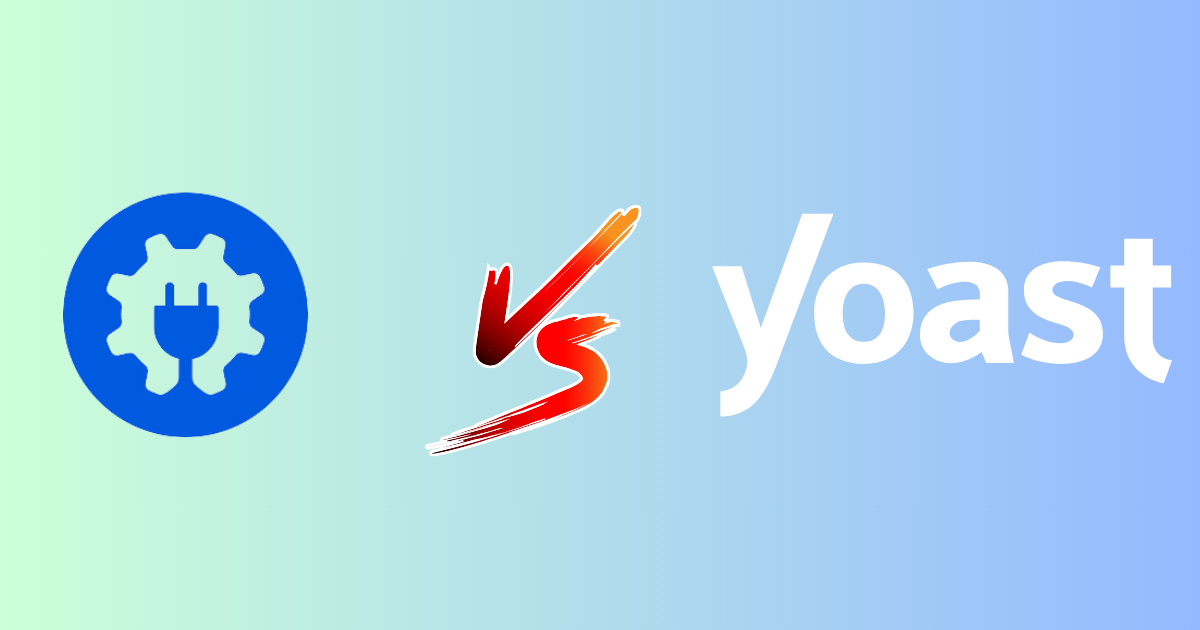
These two SEO plugins are effective WordPress plugins that enable both beginners and experts to optimize their websites for SEO.
Yoast SEO was established in 2010 by Joost de Valk. Ever since it has rapidly achieved popularity with WordPress users seeking to optimize their sites.
All in One SEO, formerly known as All in One SEO Pack from Semper Plugins, was bought over in 2020 by Syed Balkhi. Ever since it has gained many dedicated users who use its features to achieve site optimization.
Among the many features it offers, it offers a distinct feature called the SEO checklist and on-page analysis. This helps to optimize content for WordPress websites. All in One SEO is seen as among the best SEO audit tools.
So, both plugins are a great choice for any WordPress user looking to improve their site easily. These SEO plugins are popular and offer user-friendly options. This is why many users find it difficult to choose between the two.
Except you are familiar with the features of the two plugins, you can’t make a firm choice that is suitable for you. So, in this article, we will break down the comparison between Yoast vs All in One SEO into different categories.
- Installation and Setup
- Features of the Two Plugins
- Content Optimization for Yoast SEO vs All in One SEO
- Day-to-Day SEO Tasks
- Indexing and Sitemaps
- Schema.org Support
- Robots.txt file
- Site Audit
- Link Management
- E-commerce Support
- Additional SEO Tools
- Pricing Comparison
Installation and Setup of Yoast vs. All in One SEO.

It takes a significant amount of time to learn, understand, and apply SEO on websites. Search engine optimization is a specified field, so to be successful with it, you have to invest time to learn it.
A WordPress SEO plugin should not be complex. It should be straightforward enough so that novices can apply elementary SEO concepts without any difficulty.
So, let’s examine how these two plugins operate in terms of installing and setting up fundamental SEO settings on WordPress websites.
Installation and Setup of Yoast SEO
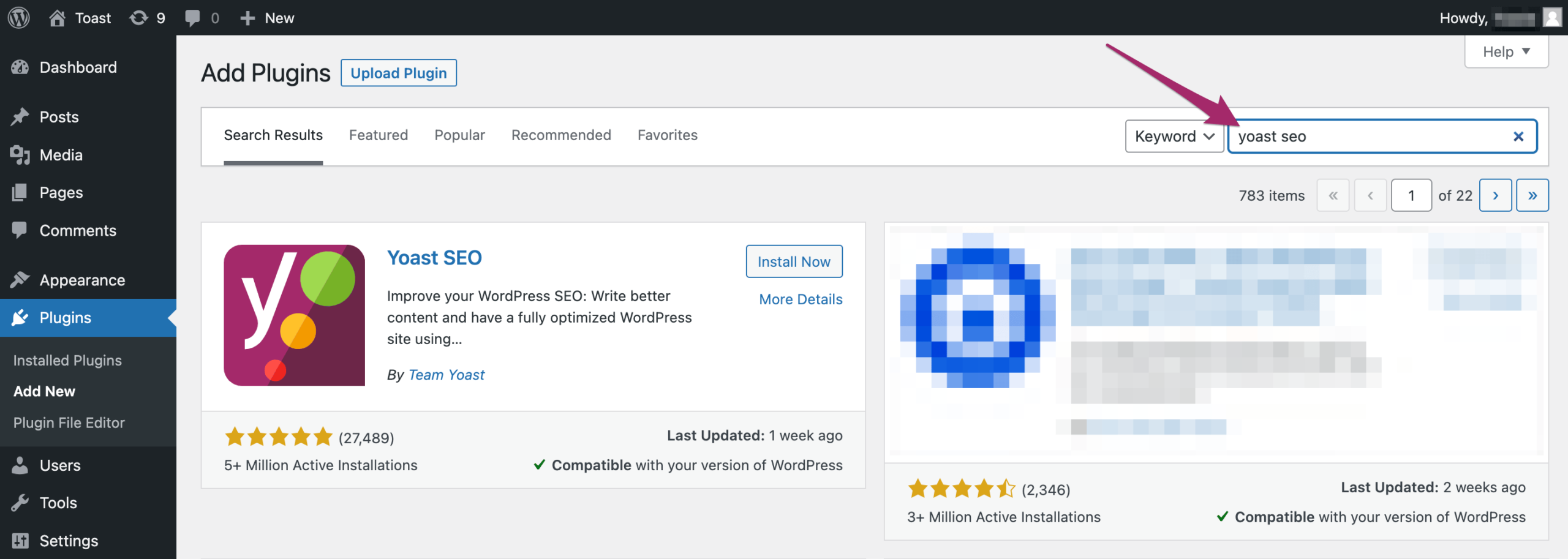
The first step is to install and activate the Yoast SEO plugin. After it has been activated, you can head to the Yoast SEO General page and launch the configuration wizard located beneath the Dashboard tab.
So this will show a guide wizard that will take you through the step-by-step process for the setup. This function allows beginners to begin immediately without feeling intimidated by complicated options and jargon.
Yoast SEO is an effective and powerful plugin. It has several options that you have to go through each one accordingly. The setting area of Yoast SEO is clearly split into pages. Each of these pages has various tabs for respective settings.
With this feature, users can easily find an option in the settings. Also, on all the pages of the Yoast SEO settings, an on-screen help is available.
To find it, just click on the question mark button at the bottom. It will open up and show you support documentation.
Basically, this is a beginner-friendly SEO tool. Its configuration wizard for beginners, clearly organized setting, and on-screen help option help beginners to set up the Yoast SEO plugin on their WordPress site.
Installation and Setup of All in One SEO
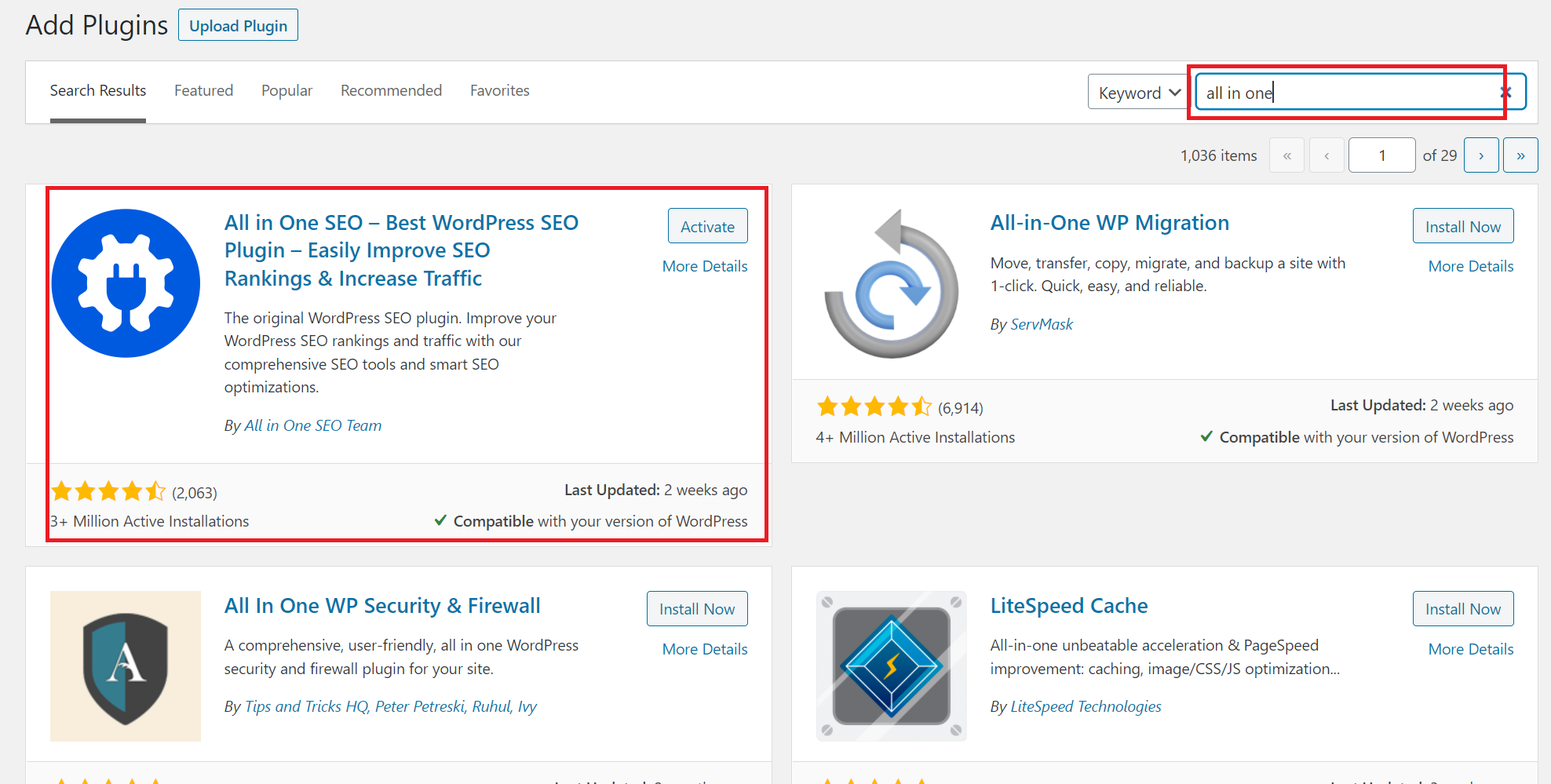
As with the other SEO plugins, the first step is to install and initiate the All in One SEO for WordPress plugin. After it has been installed and activated, the setup wizard will open automatically.
Once that is done, click on the Let’s Get Started Icon to continue.
The setup wizard for this SEO tool has fewer steps compared to the Yoast SEO plugin. All in One SEO and Yoast SEO have options they share in common. But the All in One SEO plugin simplifies them better for beginners.
Upon finishing with the setup wizard, you can access plugin settings by clicking on All in One SEO and then the General Settings page.
The General Settings page is split into several sections. Under the General Settings menu, several pages for different features are found in the left column. For example, the features are Sitemaps, Search Appearance, Redirects, and more.
On each option available, there is a help button next to them. The help icon shows a brief explanation of each feature. You can also get more help from the help icon found at the top.
These extra features make it easily helpful for beginners to understand what they are doing. By just setting up the wizard, it would make most website owners begin working on their websites. They can do this by using the All in One SEO day-to-day tasks.
So, who wins the contest with our installation comparison? My winner is the All in One SEO for WordPress.
Even though the two plugins have many options, they ensure the user experience is simplified for beginners to work with.
But I feel that with the setup wizard, All in One SEO does a better job than Yoast SEO. In the next section, we will look at the features of the two plugins.
Features of the Two Plugins

Yoast SEO plugin vs. All in One SEO plugin has unique features that provide users with a seamless experience. We will explore each WordPress plugin by what you can do with their free version, one after the other.
Things you can do for free with All In One SEO
All in One SEO does not hold back on the option it makes available for users. So, with the free version, you can do the following:
- Conduct an SEO audit. This is done to detect blocking factors and optimize specific SEO points.
- Optimize your content. This is done with the help of TruSEO. It improves the readability and text of your content.
- Connect your website with social platforms like Facebook, Pinterest, YouTube, etc, and webmaster tools like Google Search Console.
- Develop an automatic XML sitemap and the robots.txt file.
- Set up a breadcrumb path.
- Manage your content type appearance on SERP. Such as title and meta description tags for your pages, posts, and other tags.
Things you can do for free with Yoast SEO free version.
This might sound similar to the previous SEO plugin we just examined. When it comes to free features, Yoast offers basically the same thing as All in One SEO. So, with this tool, you can do the following:
- Determine how your content type appears on search results and on social platforms. Your content types can be posts, pages, and other classifications like categories and tags.
- Integrate your website with Schema to boost your odds of getting improved results. This helps search engines understand your content.
- Integrate your website with different webmaster tools.
- Set up your archive appearance, such as author, date, format, and so on.
Who wins in this section contest?
When you take a first look at the two plugins’ free features, you won’t observe any primary differences between them.
But if you look deeper, you will discover that All in One SEO has specific advanced settings compared to Yoast SEO.
Let’s take a look at them briefly:
- It provides an audit of your website. It shows your site’s SEO score. It then highlights the problems faced and suggests where to improve.
- It helps to customize your SEO title and meta description tags. This offers more options than Yoast.
- It has a more extensive and intuitive sitemap and robots.txt customization features. For Yoast, it just activates these features for you, and you can’t manage the type of data to add or remove.
- But All in One SEO provides countless options in this area, which aid efficient user control.
In the next section, we will delve into how these two plugins perform with content optimization.
Content Optimization for Yoast SEO vs All in One SEO

Content optimization option is a crucial part of any respectable SEO plugin. So, with Yoast SEO and All in One SEO, everything happens in the WordPress content editor.
So, let’s take a closer look at how these two SEO plugins perform their content optimization functions.
The Meta Box
You will find a meta box for both plugins at the bottom of your page. The All in One SEO and Yoast SEO meta box is arranged in tabs. This lets you edit the following elements for each plugin:
- Change your title and meta description tags with the option of previewing their appearance on Google’s search results page.
- Personalize the display of your content when shared on social platforms.
- Automatic generation of Schema markup. This feature is only available in the All in One SEO premium version. But, the Yoast SEO plugin lets you choose the content type that corresponds to your post or page.
- Management of on-page SEO. It displays problems and necessary optimizations that need to be performed. Each plugin helps you identify what is working and what needs to be corrected with a color code.
- Your page readability. You can edit the paragraph length, passive voice use, subheadings, and so on.
- In addition, All in One SEO provides tabs for handling your content links and redirects. But it is only available in its premium packages.
There are options available from the content editor toolbar. Note the following:
- All in One SEO provides a Headline Analyzer tool. This tool provides a score of 100 for your publication. It also suggests areas to improve the publication.
- All In One SEO offers a general score range of 100. But Yoast SEO does not give a rating. It only uses traffic lights to let you know what is working and what is not.
For Yoast SEO, a green light indicates the optimization is good. A red or orange light indicates there are things to correct.
- Both plugins permit you to adjust the settings directly from the content editor toolbar.
Page analysis and readability
When it comes to the options provided by the two plugins, on-page SEO analysis and readability are two vital elements for optimizing your content.
As we stated earlier in our comparison of the two SEO plugins, they are both similar regarding the options they provide.
When it concerns presentation, Yoast separates SEO analyses and readability into two tabs. While All in One SEO grouped everything in its ‘General’ tab.
For the included options, there is no obvious difference between the two plugins. Each of the plugins tells you what is good and what needs to be optimized.
The green color is used by both plugins to indicate what is good. Red or orange is used to identify what needs improving.
In most cases, the plugins will specify where to strategically place your primary keyword. The URL, introduction, title, and meta description tags are the strategic places it will suggest you use your main keyword.
Do not forget keyword density and the appropriate use of internal and external links. The same applies to readability, but Yoast adds a little more.
With the Yoast plugin, you can quickly detect the exact place to be corrected in your content. This is possible by clicking on the eye icon.
Yoast also offers a bit more innovative readability analysis than All in One SEO by providing more explanatory detail.
So, in the next sections, we will examine how the two SEO plugins utilize technical SEO to help your content to be discovered by search engines.
All in One vs Yoast SEO: Indexing and Sitemaps
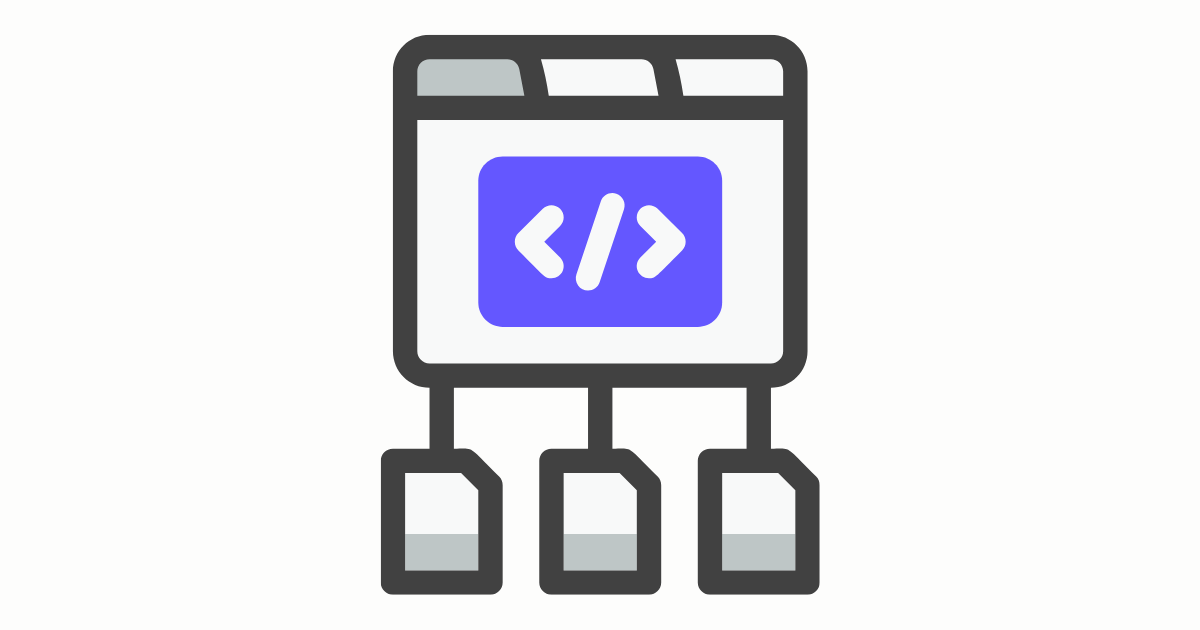
Making your content discoverable on search engines is one of the most crucial tasks of any SEO plugin. Several ways this is achieved are by creating sitemaps, integrating with webmaster tools, checking your website SEO, and more.
So, let’s take a look at how these two plugins handle this category.
All in One SEO Indexing and Sitemaps.
This SEO plugin automatically creates XML sitemaps for your WordPress website. It allows you to easily handle your XML sitemap from a particular settings page. It can be found when you navigate from the All in One SEO to Sitemaps.
Once there, scroll down to locate various settings that can help you manage your XML sitemaps. You can decide which type of posts and classifications to add to your sitemaps.
With the All in One SEO, you can add any custom page to your sitemap. This is very helpful if you are using a custom landing page not generated by WordPress.
You can also enable News and Video sitemaps as additions. Lastly, All in One SEO comes with an RSS sitemap feature.
Yoast SEO Indexing and Sitemaps.
This SEO plugin creates XML sitemaps automatically for all your post types. For the sake of keeping things straightforward, it does not have a dedicated page to see or manage your XML sitemaps.
But you can switch it on or off by navigating the Yoast SEO to the General page and then turning to the ‘Feature” tab.
Yoast SEO plugin settings do not give you the option to add or remove post types to your XML sitemaps. It grants you the opportunity to confirm your website for common webmaster tools like Google Search Console, Baidu, Bing Webmaster, and others.
Lastly, Yoast SEO premium subscribers can install and activate the Video and News sitemaps extensions, unlike All in One SEO.
This feature allows your videos and news sites to show on the Video and Google News search results.
Who wins this category?
The two plugins provide great XML sitemap features. But All in One SEO lets you have a lot of control over your XML sitemaps.
Yoast vs All in One SEO: Schema Support

Schema is a particular type of HTML code used on a website to notify search engines about the content information type.
For example, with Schema, you can indicate if the content is a blog post, recipe, or product page. This lets search engines show quality snippets in search results.
So, let’s go ahead to compare how the two SEO plugins perform in this category.
Yoast SEO Schema Support.
Yoast SEO automatically includes schema metadata to your WordPress posts and pages. To see the default settings, go to the SEO, then Search Appearance page.
Navigate to the Knowledge Graph and Schema section. At this point, you can choose whether your site is for a singular person or an organization. Afterward, you can provide a name and a logo.
If you want more schema options, switch to the tab labeled Content Types. When you scroll down, you will discover the default Schema settings for your content types.
You can also modify the schema type for singular posts and pages. Just edit the content, scroll down to the Yoast meta box, and switch to the Schema tab. Lastly, install the Yoast Local SEO extension to offer more details about your business.
All in One SEO Schema Support.
As with Yoast SEO, All in One SEO has a default section for Schema settings. You will find this setting under the All in One SEO Search Appearance page.
With this setting, you can provide your business or individual name, phone number, logo, and contact type, such as sales, support, etc. From here, you can also modify the default Schema settings for your different content types.
All in One SEO has a Next Gen Schema Generator, which helps you set the Schema setting for each post and page.
So, scroll down on the post editor screen and turn to the Schema tab under the All in One SEO settings. Once you have done this, click on the ‘Generate Schema’ button.
From here, the Schema catalog will open, and you can select a Schema type to include in your content. The Schema types consist of recipe schema, job posting Schema, book schema, software schema, how-to Schema, FAQ schema, and more.
The All in One SEO also has a Local SEO extension that assists you in enhancing your website for local search results.
Who is the winner in this category?
As explained, the two plugins have full schema.org support. But All in One SEO is better at making the options readily apparent. Its Schema Catalog provides many more schema types.
All in One SEO vs Yoast SEO Robots.txt file

When it concerns managing robots.txt files in WordPress, the two plugins provide effective tools. These tools help you to manage your site’s search engine visibility.
So, with All in One SEO robots.txt, you can seamlessly handle the file generated by WordPress. This gives you control over the instructions you give to web crawlers concerning your website.
This feature lets you remove specific pages or directories from being indexed by search engines. It also prevents agents from gaining access to your site.
In contrast, Yoast SEO offers an easy way to generate or edit the Yoast robots.txt file. This can be done quickly from the dashboard of your WordPress site.
So, without having to leave your WordPress admin area, It allows you to readily update your site’s instructions for search engine crawlers.
Yoast SEO has a feature that lets you preview your robots.txt file. This assures that it is working perfectly.
In general, the two plugins provide tools for editing the .htaccess file. This is an import file that manages how search engines engage with your site.
All these features let you personalize the settings of your website. So, this gives you higher control over your search engine optimization endeavors.
All in One SEO vs Yoast SEO Site Audit

All in One SEO offers a complete analysis of your site’s SEO in a few seconds. It offers detailed explanations of any vital mistakes found.
It also provides resources to assist you in solving them on your own.
Analyzing your site speed and receiving specified suggestions on how to optimize your site is possible with All in One SEO.
In contrast, Yoast has a free tool called Yoast SEO analysis. It provides a fundamental site audit. But, the effective function of Yoast SEO can be experienced on the premium version. This includes an extended and intelligent SEO analysis.
The SEO analysis is one of the main features of Yoast SEO. It scans your content alongside SEO best practices. It also provides feedback in the form of distinct colors like green, orange, and red.
So, with Yoast SEO premium, you have all the vital tools needed to optimize your content visibility. You can also improve your site’s rankings on search engines.
In the next section, we will explore how these two popular tools help manage your links for search engine optimization.
Yoast SEO vs All in One SEO: Link Management

Adequately managing your website’s links can help optimize your rankings on search engines. It also helps to draw more traffic to your website.
So, let’s jump in and see how these plugins compare to each other.
1. Internal link manager
All in One SEO has a Link Assistant. This allows you to generate better internal links on your WordPress site. This is done by crawling the links on your website and providing a detailed report.
So, with this, you can see the number of links, like outbound links, internal links, and affiliate links, for all posts or pages.
But in contrast, the Yoast SEO plugin has a fundamental internal linking tool available to premium users only. It also checks your content for Yoast internal linking.
It also offers recommendations for optimizing them. However, it is not as complete as the All-in-One SEO link assistant.
2. Redirection manager
Yoast SEO and All in One SEO both have a redirection manager feature. This function lets you handle redirects on your WordPress site.
All in One SEO has a free version. This version makes provision for 301 redirects and 404 error monitoring.
It also redirects various URLs of a post to the same destination URL. It also includes a comprehensive log of all redirects and 404 errors on your website.
Yoast SEO premium consists of an in-built redirection manager that allows you to redirect pages to another destination on your website.
It also automatically processes the redirects on existing content. Yoast SEO redirects also allow you to generate a redirect if you modify a post or page URL.
It also signals you to generate a redirect whenever you delete one. In general, these two SEO plugins offer features that are similar but with a little difference in approach.
3. Editable canonical URL
An editable canonical URL is a unique feature in SEO plugins. This feature allows you to indicate the choice page or post URL.
So, with this, search engines can treat the URL as the main version, thereby optimizing your website’s SEO.
So, in All in One SEO, you can stipulate your own canonical URL by editing your content. You can also navigate down to the All in One SEO Settings section.
This feature also lets you eliminate the page numbers from content that is paged.
Yoast SEO offers two ways to manage canonical URLs. It automatically includes the canonical URLs for most of the pages on your WordPress site or blog.
Or else, you can programmatically filter the output of the canonical URL of WordPress.
4. Noindex tool
This tool is typically used in search engine optimization to stop search engine crawlers from indexing a web page. This tool is used for pages meant not to be indexed.
So, with All in One SEO, the Noindex settings have been swapped with ‘new show.’ You can find this in the All in One SEO version 4.x of Search Results settings in Search Appearance.
The records for Noindex tool settings can be located in Showing or Hiding Your Content in Search Results.
On the other hand, Yoast SEO has a hidden feature. So, because of this, the internal search pages of your website are configured to Noindex by default.
This setting follows Google Guidelines, so it cannot be edited. But you can still use the platform’s filter to change it if you want to.
Who wins this section?
As far as managing links is concerned, Yoast SEO doesn’t offer enough features and performance. So, All in One SEO stands out due to its higher amount of features and better performance.
In the next section, we will examine how these tools perform with ecommerce. Let’s get into it.
Yoast SEO vs All in One SEO: Ecommerce Support

Having organic traffic to your business leads to more sales. So, this makes e-commerce SEO vital for your business.
So, let us examine how each of these two popular tools performs for ecommerce sites, regardless if you’re using WooCommerce or any ecommerce plugin.
Yoast SEO Ecommerce Support
Yoast SEO gives out-of-the-box support for ecommerce websites. It also has a separate WooCommerce SEO plugin. This can be used if you are using a WooCommerce website.
You can also include product titles and descriptions by default. Yoast SEO also generates a product category XML sitemap for your business.
When you have installed WooCommerce SEO, you will be able to give more information for product pages.
All in One SEO Ecommerce Support
This SEO tool plugin offers a stronger e-commerce support option out of the box. Once you include a product, it properly indicates it as a Product in the Schema markup.
All in One SEO also lets you include more ecommerce schema data. This enables you to grow your business. So, for every product, you can adjust the schema markup and offer more abundant details.
This plugin creates XML sitemaps automatically for your products and categories. So, you can use an order form instead of a WooCommerce plugin but still want to improve that page as a product.
You can achieve this with the All in One SEO. Just edit the page, and the All in One SEO settings automatically adjust the schema type to Product.
Who wins this section?
Yoast SEO offers extra ecommerce support with an extension. But All in One SEO makes it pretty easy.
Without installing an ecommerce plugin, It adds the ability to improve product pages. So, this makes it a better choice for online businesses.
In the next section, we will examine additional tools that come with these plugins to suit your needs.
Additional Tools and Features
Ensure that the additional tools and features embedded in your plugin fit your needs. This way, you can generate useful content.
The additional tools and features primarily exist, so you don’t have to source for more plugins to comprehensively optimize your site.
So, for all your on-page SEO needs, Yoast and All in One SEO plugins come with added features to give you a complete solution. Now, let’s break down the extra tools and features for both plugins.
Yoast SEO additional tools and features
Yoast SEO has different features that help you to optimize your content. These include:
- Social media integration
- XML Sitemaps
- Breadcrumb navigation
- Open Graph meta tags
- Robots.txt
- htaccess editor
- Import or Export SEO data
- Data import from Google webmaster tools
Now, let us move on to the additional tools and features of All in One SEO
All in One SEO additional tools and features
All in One SEO has effective tools and features. They include:
- User Access Control
- XML Sitemaps
- Headline Analyzer
- Breadcrumb Navigation
- File Editor
- Redirection Manager
- Bad Bot Blocker
- Import and Export SEO Data
- Robots.txt
- Social Media Integration
- ChatGPT AI Tools
- Link Assistant
- Open Graph Meta Tags
- Performance Manager
- 404 Error Tracking
All these features work together to help you get higher rankings in search engines within a short time. In the next section, we will explore their pricing structure.
All in One vs Yoast SEO: Pricing Plans
Pricing is an important element for a lot of people. Pricing helps users to determine their next choice. So, Yoast SEO and All in One SEO offer limited free versions.
But you can upgrade to the paid versions if you want to take complete advantage of all their features.
The premium or paid versions of both plugins offer priority support and routine updates. Now, let’s go ahead to compare the pricing of these two plugins.
Yoast SEO Pricing
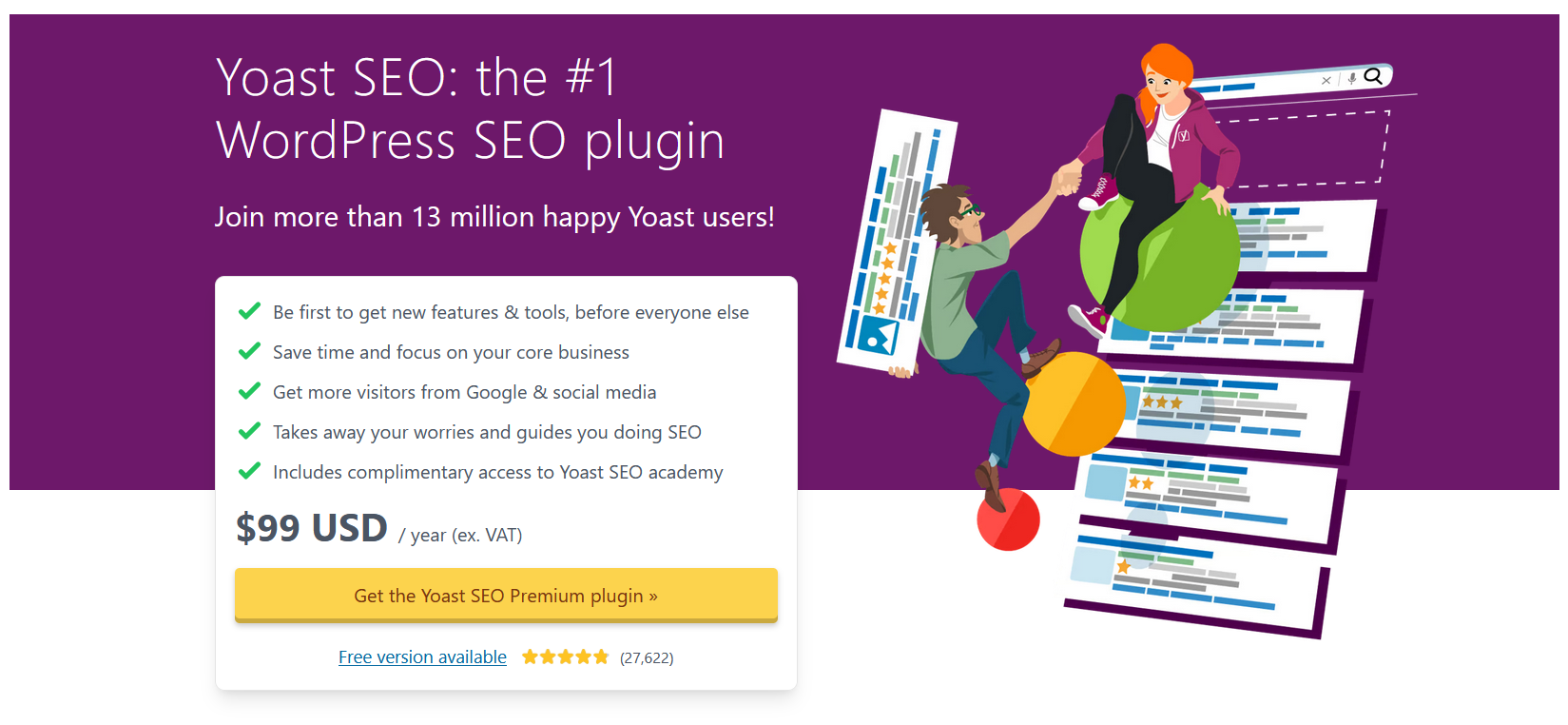
Yoast SEO Premium offers a single-site license for $99. If you add more sites, the price increases. The cost for additional extensions like Local News, WooCommerce, and Video SEO is $79 for a single site.
It has a subscription plan of $299 per year. This plan includes all extensions that can only be used on a website. If you want to use it on more websites, you will need to buy extra subscriptions.
All in One SEO Pricing
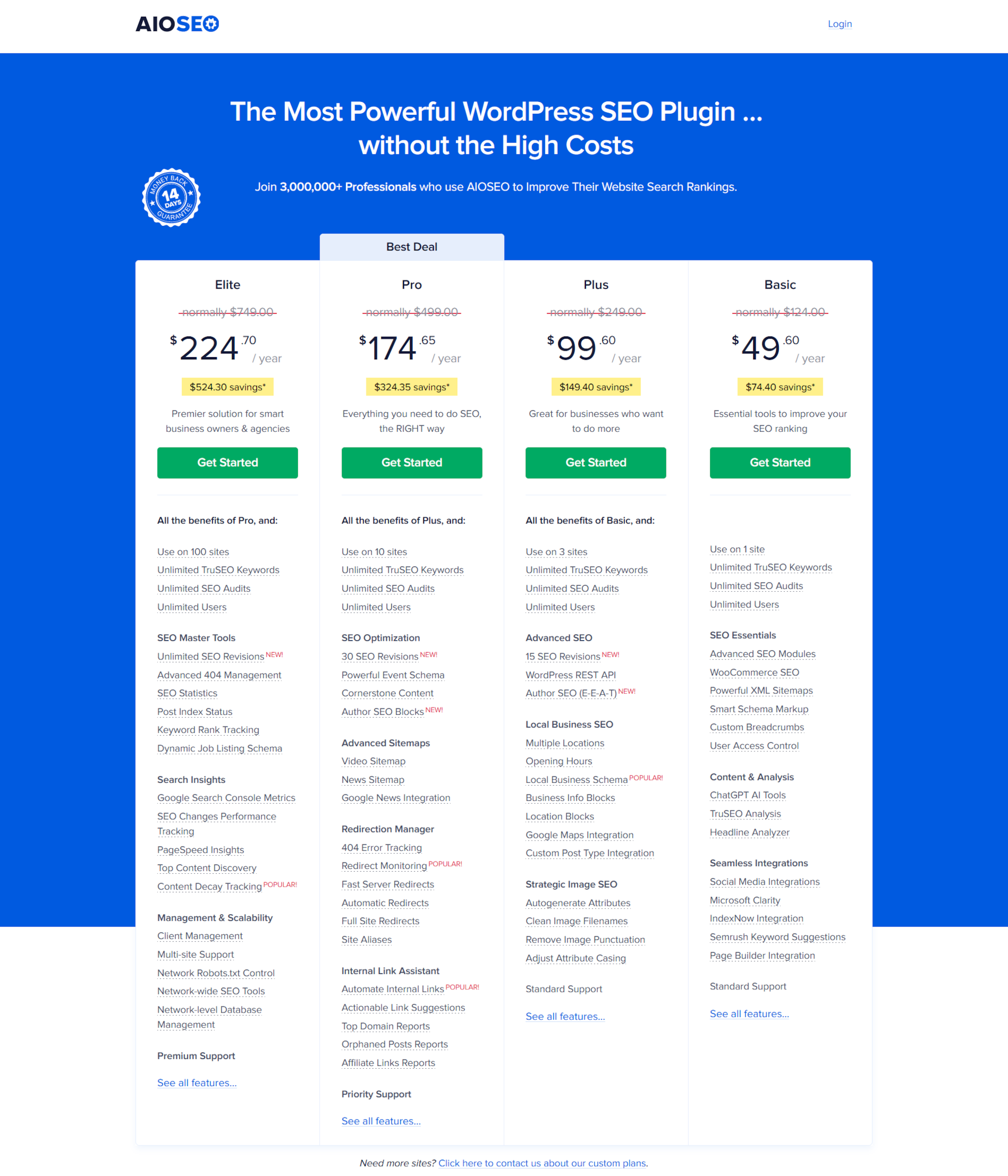
This plugin has limited support and features. If you want priority support, upgrade to a premium or paid version.
The cost begins at $49.60 for one site, and it runs for a year with support and updates. All in One SEO has a plan priced at $199.60. It consists of add-ons and features for up to ten websites.
Who is the winner of this section?
If you are managing just one website, the pricing is pretty much the same for both plugins. However, all Yoast subscriptions are restricted to one website.
The All in One SEO paid plan can take up to ten websites. This makes it a better deal.
Final Verdict
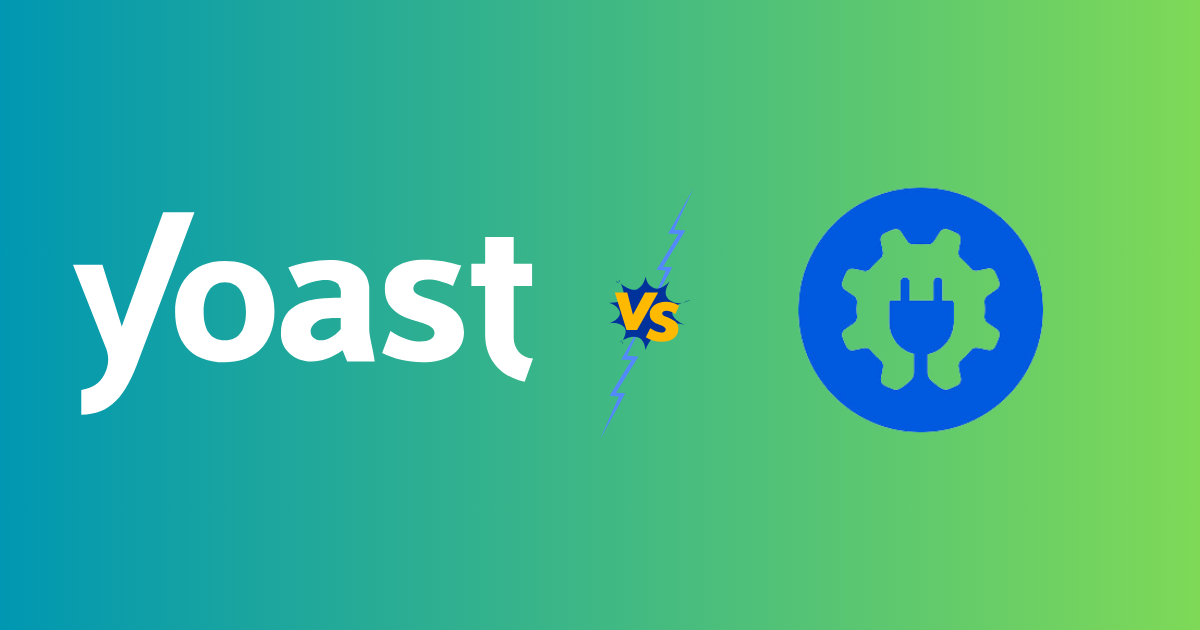
We have been able to explore a detailed assessment of the Yoast vs All in One SEO battle. But both plugins have good features.
This makes it easy for us to understand why they are renowned and the performing SEO plugins for WordPress.
The two plugins help you achieve your goal of optimizing your site for top ranking on search engine result pages.
But All in One SEO has robust features, a great pricing plan, and support. So this makes it the best WordPress SEO plugin.
I hope the review on the most popular plugins done here can help you choose better for your WordPress site.


